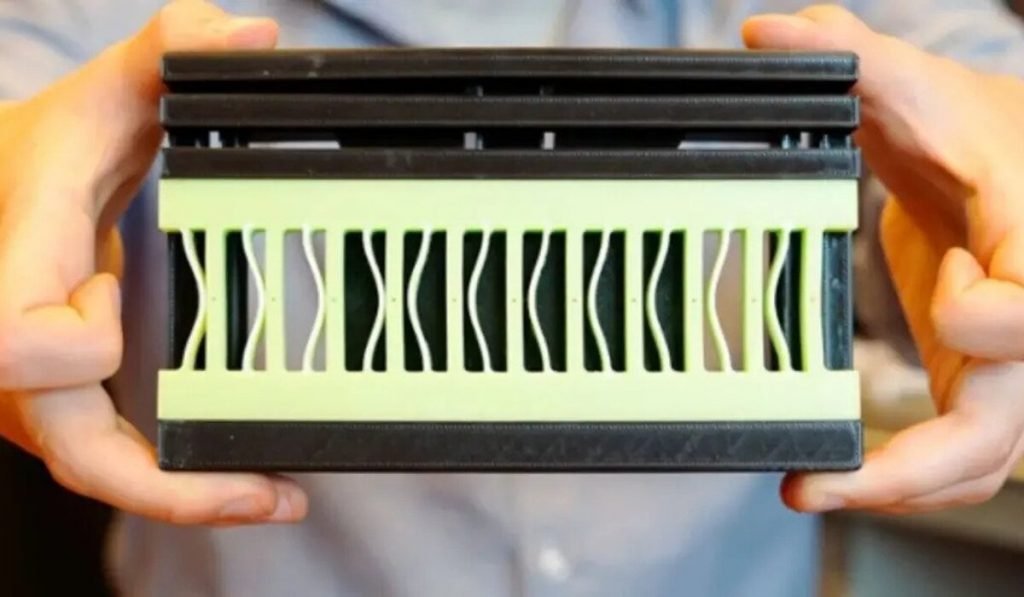Researchers from Leiden University and AMOLF in Amsterdam have developed a remarkable new metamaterial known as a Beam Counter. This material, which takes the form of a rubber block, has the ability to count. While it may not seem groundbreaking in the quest for quantum computers capable of complex calculations, physicist Lennard Kwakernaak finds the intricacies of simple objects fascinating.
The rubber block is classified as a mechanical metamaterial, meaning its properties are influenced by both its composition and structure. What makes this material unique is that it doesn’t require external factors like changes in temperature to perform its counting function.
The researchers have created several prototypes of the rubber block. One version consists of 22 beams of varying thickness. The thicker beams detect external stimuli, such as pressure, and use this input to count the number of occurrences by utilizing the thinner beams.
Rather than relying on complex electronic circuits, the rubber block visually displays the count through the shape of the thin beams. A snap from left to right represents a count. By comparing the left and right positions, one can interpret the count in a binary system.
To ensure accuracy, the thinner beams are designed not to return to their original position when pressure is applied. The block resets after reaching a count of ten, allowing it to be reused.
“Counting is the simplest computation we could come up with, so that was a logical starting point,” explained Kwakernaak in a press release.
The researchers have also developed a system where the rubber block can differentiate between heavy and light pressures. This feature could be used to represent ones and tens, enabling the counting of larger numbers.
While the rubber block may not initially appear revolutionary, its underlying physics are remarkably complex and difficult for computers to simulate.
The next challenge for the researchers is to identify potential applications for this metamaterial. Its versatility allows for resizing, making it suitable for various purposes such as designing pedometers or monitoring heavy vehicles on bridges.
Metamaterials offer additional advantages, including cost-effectiveness, durability, and low maintenance requirements. It is not uncommon for materials to be discovered before their practical applications are fully realized.
The development of complex structures using metamaterials could lead to even more diverse applications. The ability to teach a rubber block to count suggests that simple computers may not be far behind.
The research findings were published in the journal Physical Review Letters.

